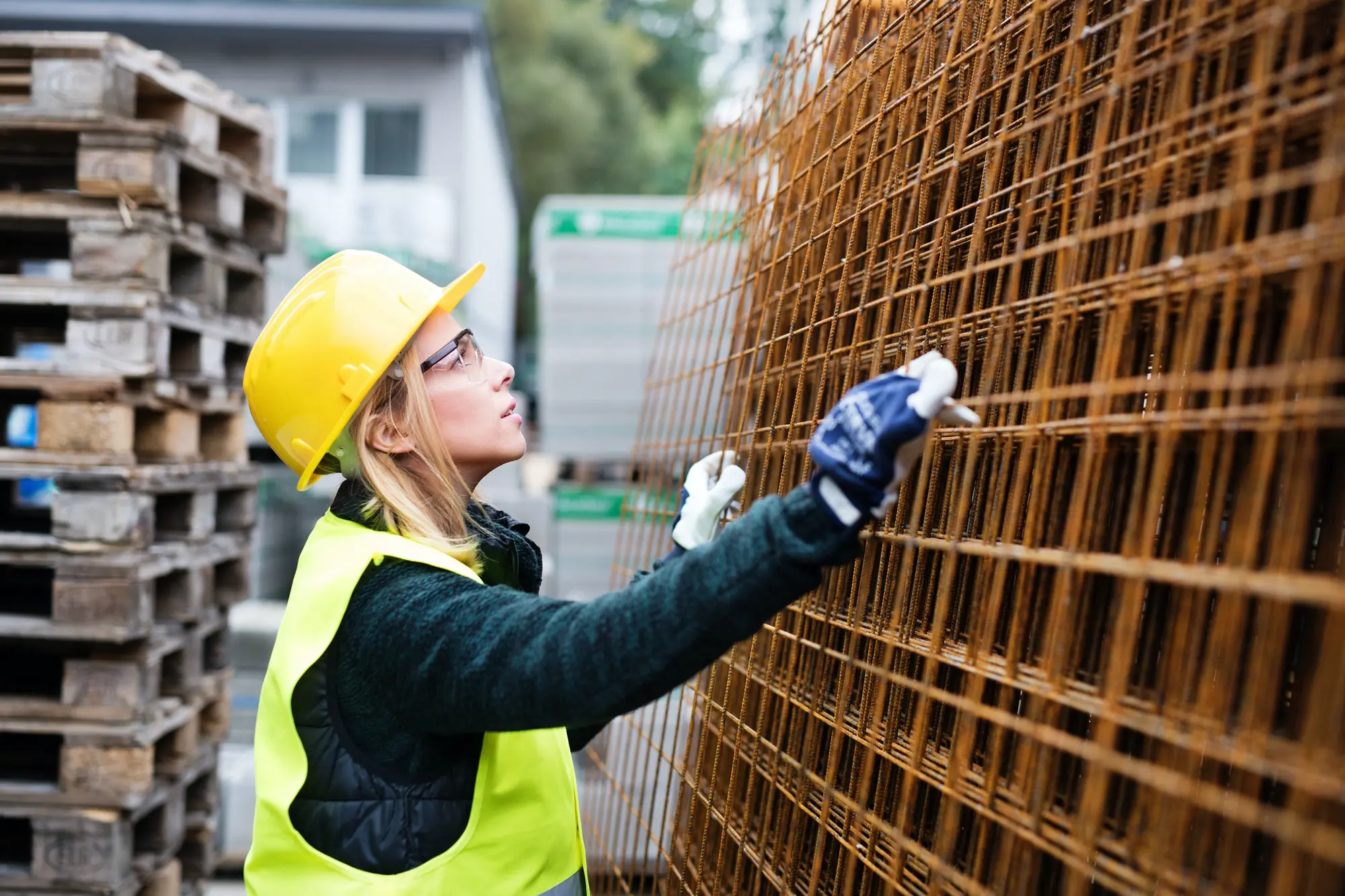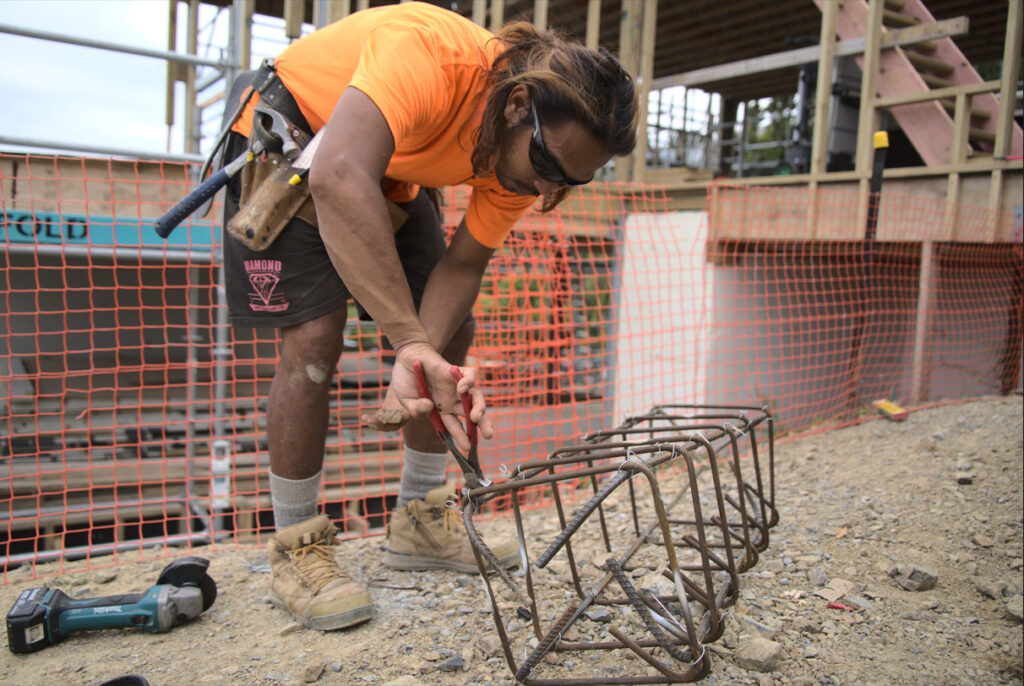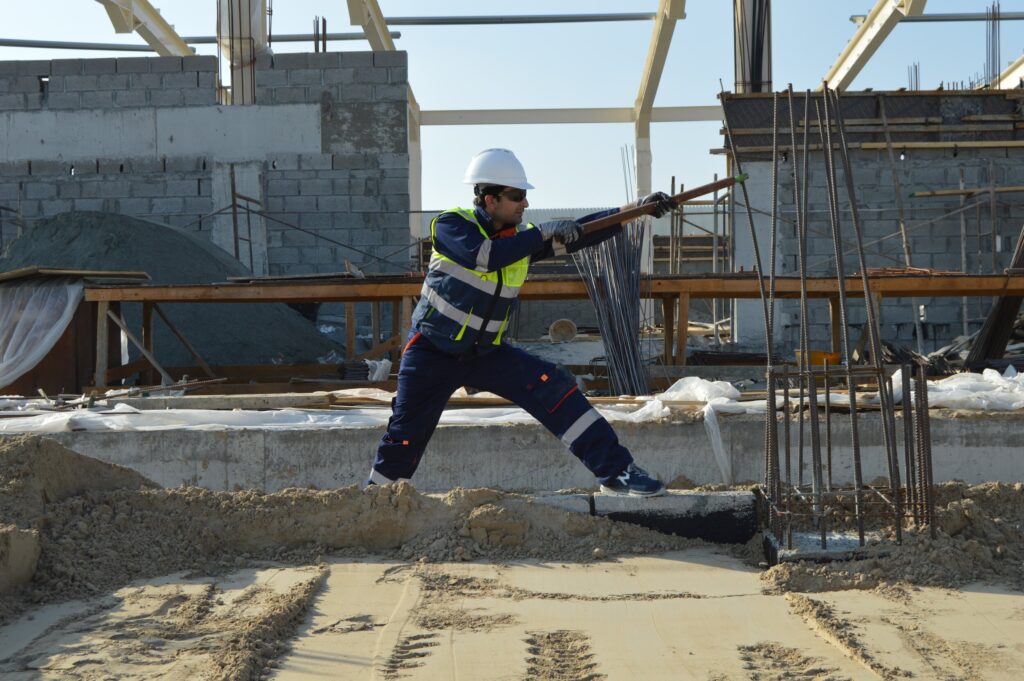
Construction site safety is a top priority in Australia’s building industry. Every year, incidents involving exposed rebar ends pose significant risks to workers’ wellbeing and project timelines.
Rebar safety strips are essential protective measures on construction sites, acting as strong barriers between workers and potentially hazardous steel rod endings. These protective caps turn dangerous exposed ends into safer, visible points of awareness across the worksite.
The use of safety strips addresses several key workplace safety requirements:
- Physical Protection – Creates a cushioned barrier against accidental contact
- Visual Awareness – High-visibility colours alert workers to potential hazards
- Compliance Assurance – Meets Australian workplace safety standards
- Risk Mitigation – Reduces the likelihood of serious injuries
As the construction industry continues to evolve, the role of safety strips has become increasingly vital in maintaining worker protection. These simple yet effective tools represent a fundamental aspect of responsible site management and demonstrate an unwavering commitment to workplace safety.
The Role of Reo Bars in Construction
Reo bars are a crucial part of construction in Australia, providing strength and support to concrete structures. These steel bars are used to reinforce concrete, making it stronger and more flexible.
Rebar safety strips are protective barriers that keep workers safe from exposed steel reinforcement bars on construction sites. These crucial safety devices prevent serious injuries by covering sharp rebar ends that stick out from concrete structures.

Types of Reo Bars in Construction:
There are several types of reo bars used in construction:
- Standard reinforcing bars (N-Grade)
- Seismic-grade bars (S-Grade)
- Ductile bars (D-Grade)
- Welded wire mesh
- Threaded bars
Each type has its own benefits and is used for different construction projects, such as building houses, tall buildings, or infrastructure.
Key Applications:
Reo bars have various applications in construction, including:
- Reinforcing foundations
- Strengthening columns and beams
- Constructing slabs
- Supporting retaining walls
- Reinforcing bridge decks
The combination of reo bars and concrete creates a material that offers:
- Increased strength under tension
- Control over temperature changes
- Prevention of cracks in the concrete
- Even distribution of weight
- Long-lasting durability
However, it’s important to be aware of safety concerns when using reo bars. The sharp ends of these bars can be dangerous on construction sites. To address this issue, it is essential to use Reo-Bar Safety Protection Strips which are specifically designed to safeguard individuals from exposed reo bars. These strips are made to be strong, resistant to UV rays, and come in convenient lengths of 1 meter.
Understanding Rebar Safety Strips
Key Safety Features:
- Bright colours for easy visibility
- Strong materials that can handle tough site conditions
- Secure grip design to stop accidental removal
- Weather-resistant properties for outdoor durability
- Standard sizes to fit common rebar dimensions
The effectiveness of safety strips comes from their carefully engineered design. Each cap has internal ribbing that grips the rebar tightly, while the mushroom-shaped top creates a wide protective surface area. This design spreads out the force over a larger area if someone falls onto the protected rebar.

Material Composition:
- UV-stabilised polyethylene for outdoor use
- Heavy-duty PVC options for extra durability
- Reinforced plastic compounds for high-stress areas
- Steel-core variants for maximum protection
Australian construction standards require safety strips to keep their protective qualities in different weather conditions. Quality manufacturers use materials tested for: Read about resistance on https://web.chem.ox.ac.uk/teaching/Physics%20for%20CHemists/Magnetism/Resistance.html
- Temperature resistance (-20°C to +60°C)
- UV degradation resistance
- Impact resistance at different temperatures
- Chemical exposure resilience
These protective caps have ergonomic designs that make them easy to install quickly while ensuring worker safety is always the top priority during construction projects.
Benefits of Using Safety Strips with Rebars
Safety strips are essential protective elements on construction sites, offering numerous benefits for worker safety and risk reduction.
Hazard Reduction
Safety strips help to minimise hazards in the following ways:
- Eliminating exposed sharp ends of vertical and horizontal rebars
- Reducing trip hazards by increasing visibility of protruding bars
- Protecting workers during low-light conditions with high-visibility colours
- Minimising risks during emergency evacuations
Critical Injury Prevention
Safety strips play a crucial role in preventing severe workplace incidents:
- Protection against head injuries from falls near vertical rebars
- Prevention of cuts and lacerations during regular movement
- Reduction of eye injuries from protruding horizontal bars
- Elimination of impalement risks during accidental trips or falls
Enhanced Safety Culture
The presence of safety strips contributes to a stronger safety-first mindset:
- Creating visual reminders of potential hazards
- Demonstrating management commitment to worker protection
- Encouraging workers to identify and report unprotected rebars
- Setting clear safety standards across construction sites
Compliance Benefits
Implementation of safety strips helps construction companies:
- Meet Australian workplace safety regulations
- Reduce workplace injury-related costs
- Lower insurance premiums through improved safety records
- Maintain positive relationships with safety inspectors
Safety strips offer a practical, cost-effective solution for safeguarding workers from rebar-related injuries. Their high visibility and physical protection features provide multiple layers of safety, while their presence reinforces a culture of workplace safety awareness and compliance.
Types and Varieties of Safety Strips Available in the Market
The Australian construction market offers diverse safety strip options to suit different project requirements and budgets.
1. Standard PVC Safety Strips
- Basic mushroom-style caps
- High-visibility orange or yellow colours
- Suitable for 12mm to 40mm rebar diameters
- Cost-effective solution for short-term projects
- Impact-resistant properties
2. UV-Treated Plastic Options
- Enhanced weather resistance
- Long-lasting protection against sun exposure
- Ideal for extended outdoor use
- Available in custom colours for project-specific requirements
- Superior durability compared to standard PVC
3. Premium Steel-Core Reinforced Strips
- Integrated metal plate for maximum protection
- Suitable for high-risk areas
- Withstands heavy impact
- Extended lifespan in harsh conditions
- Available in various sizes up to 50mm diameter
The market also features specialised variations to accommodate specific construction needs:
1. Flat-Top Designs
- Perfect for walkway areas
- Reduces trip hazards
- Allows for material storage on top
- Available in different load ratings
2. Square Grid Configurations
- Designed for multiple adjacent rebars
- Covers up to 4 bars simultaneously
- Reduces installation time
- Cost-effective for large-scale applications
While basic PVC options might suffice for standard construction projects, steel-core reinforced varieties provide enhanced protection in high-risk environments. The choice between different safety strip types depends on project duration, exposure conditions, and specific safety requirements. Click here to find more about environments.
Installation Guidelines and Maintenance Tips for Optimal Performance of Safety Strips with Rebars
Proper installation of safety strips on rebars requires attention to detail and regular maintenance checks. Here’s a straightforward guide to ensure optimal protection:
Installation Steps:
- Clean the rebar end thoroughly to remove dirt, rust, or debris
- Check the safety strip for any damage or cracks before installation
- Position the strip directly above the rebar end
- Push down firmly until you hear or feel a clicking sound
- Test the security by gently pulling the cap upward
Daily Maintenance Checklist:
- Inspect strips for signs of wear or damage
- Check for proper alignment and secure fit
- Remove any accumulated debris around the cap area
- Replace any cracked or damaged safety strips immediately
- Document inspections as part of site safety protocols
Key Installation Tips:
- Select the correct size strip for your rebar diameter
- Apply strips at the start of each workday
- Keep spare safety strips readily available on-site
- Remove and replace strips when moving or adjusting rebars
- Store unused strips in a clean, dry location
The snug fit design of modern safety strips allows for quick installation without specialised tools. A properly installed strip should resist lateral movement and maintain its position during typical construction activities. Regular inspection helps identify potential issues before they compromise worker safety.
Cost-Effectiveness and Sustainability Aspects Associated with Using Safety Strips on Construction Sites
Safety strips represent a cost-effective investment in workplace safety, delivering substantial returns through injury prevention and reduced insurance premiums. The initial outlay for these protective devices is minimal compared to potential workplace injury costs.
Modern safety strips are manufactured using recyclable materials:
- PVC-based strips – 100% recyclable and can be repurposed into new construction products
- HDPE plastic covers – Highly durable and environmentally sustainable
- UV-treated materials – Extended lifespan reduces replacement frequency
The environmental benefits extend beyond recycling capabilities:
- Reduced waste through longer product lifecycles
- Lower carbon footprint in manufacturing processes
- Minimal environmental impact during disposal
Australian construction companies can benefit from bulk purchasing options, with many suppliers offering competitive pricing for large-scale projects. The durability of modern safety strips allows for reuse across multiple projects, creating additional cost savings while maintaining environmental responsibility.
Local manufacturers now produce safety strips using recycled materials, supporting both the circular economy and reducing transportation emissions. This shift towards sustainable manufacturing aligns with Australia’s growing focus on environmentally conscious construction practices.
Read about lvl framework on: Why LVL Formwork Is Becoming Popular in Modern Construction
Conclusion
Protecting workers from rebar-related hazards remains a critical priority in Australian construction. The implementation of safety strips represents a fundamental shift towards proactive site safety management, demonstrating how simple solutions can prevent serious workplace incidents.
Quality control measures, including proper rebar protection, create a robust safety framework that safeguards workers while maintaining project efficiency. These protective measures align with Australian workplace safety regulations and industry best practices.
Covert Procurement stands at the forefront of construction safety innovation, offering:
- High-quality safety strips and rebar caps
- Expert guidance on safety product selection
- Reliable supply chain solutions
- Competitive pricing for bulk orders
Our commitment extends beyond product supply – we partner with construction companies to create safer work environments through comprehensive safety solutions. For instance, we offer F17 & F14 grade formwork plywood sourced from Australian certified suppliers. We also provide structural laminated veneer lumber (LVL), engineered to meet the highest standards in the construction industry.
Additionally, our chain and shade mesh products are fireproof, UV-treated, and hot-dipped galvanized for lasting protection.
